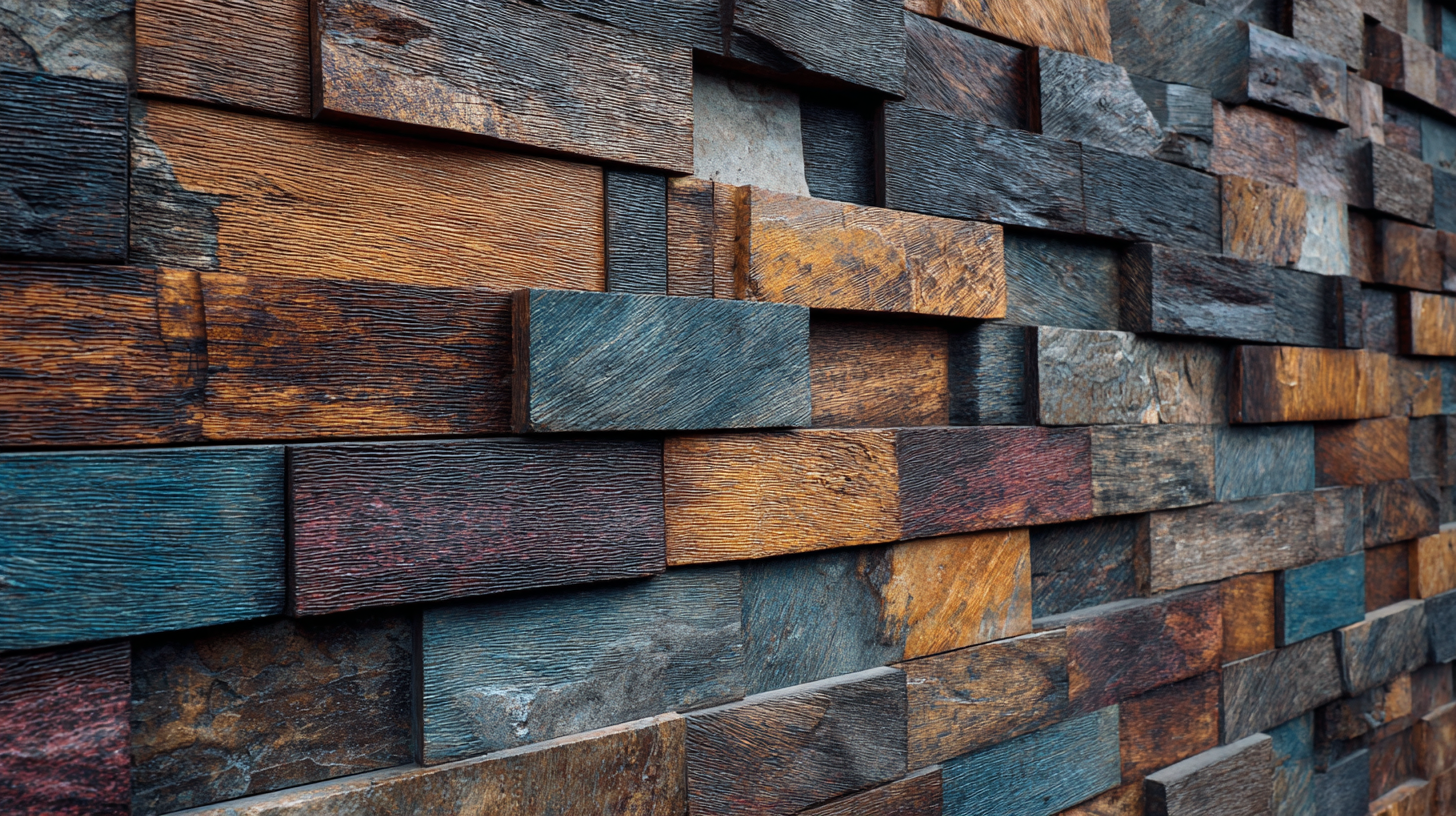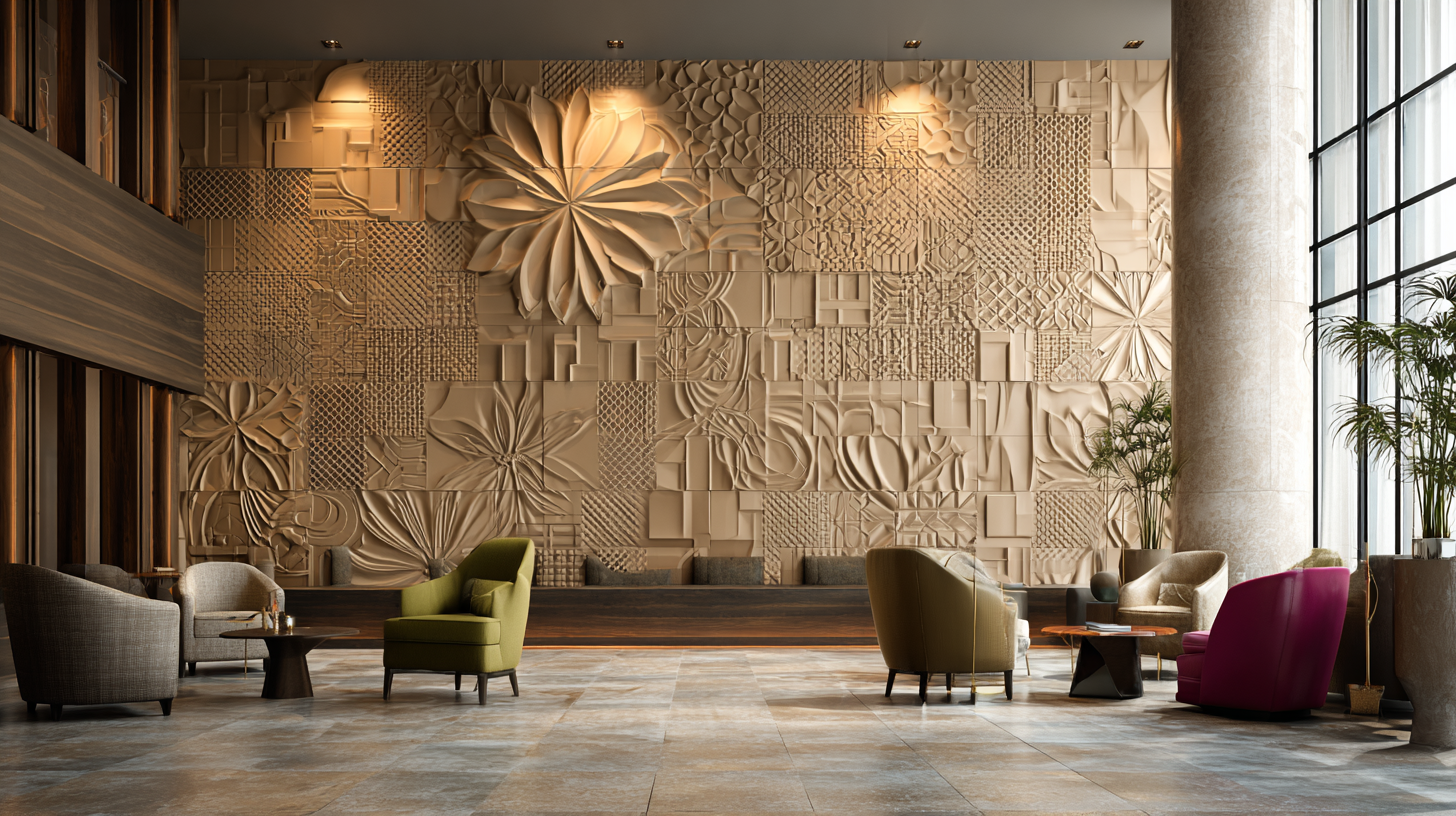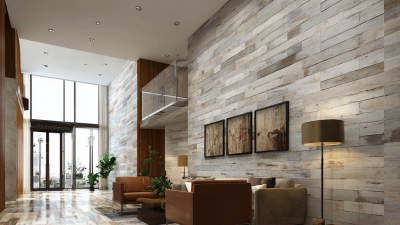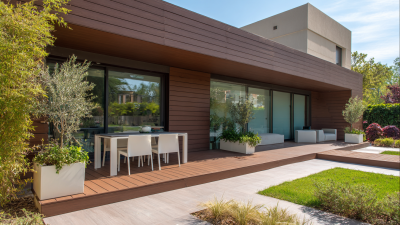Leave Your Message
As we approach 2025, the landscape of interior design continues to evolve, with
WPC (Wood Plastic Composite) decor wall panels emerging as a prominent trend.
These panels not only offer aesthetic appeal but also combine
durability and
sustainability, making them an ideal choice for modern homeowners and designers alike.
According to a recent report by Grand View Research, the global WPC market is expected to reach
USD 8.3 billion by 2025, demonstrating a compound annual growth rate (CAGR) of
12.3%. Such growth underscores the increasing popularity and acceptance of WPC decor wall panels in both residential and commercial applications.
Industry expert Dr. Linda Green, a leading figure in sustainable interior materials, previously stated,
"WPC decor wall panels represent the future of eco-friendly design, merging natural aesthetics with advanced technology."
This sentiment reflects a broader industry shift toward innovative materials that align with sustainability goals while also satisfying consumer demand for unique, customizable decor solutions.
In this article, we will explore the best WPC decor wall panel trends for 2025, highlighting key design inspirations, materials, and application methods that can transform any space.
Whether you are an architect, interior designer, or a DIY enthusiast, understanding these trends will equip you with the knowledge to make informed decisions in your projects.

The rise of WPC (Wood Plastic Composite) wall panels is indicative of a broader trend towards sustainable and innovative building materials. As we look towards 2025, industry growth projections suggest a significant uptick in the adoption of these panels, driven by their aesthetic appeal, durability, and eco-friendliness. With advancements in manufacturing technology and design options, WPC panels are becoming a popular choice for both residential and commercial applications. Their resistance to moisture and insects further enhances their attractiveness as a modern wall decor solution.
Market analysts forecast that the integration of smart technologies and sustainable practices in construction will contribute to the burgeoning demand for WPC wall panels. The industry's focus on leveraging digital design trends is expected to lead to customized and responsive architectural solutions that not only meet functionality but also align with the growing consumer interest in environmentally responsible products. As more innovative designs emerge, WPC panels are poised to redefine the landscape of interior design, making 2025 a pivotal year for this emerging market segment.
As we move towards 2025, the adoption of eco-friendly materials in interior design is surging, and Wood Plastic Composite (WPC) is at the forefront of this sustainable trend. According to a recent report by Grand View Research, the global WPC market is expected to reach $9.2 billion by 2025, reflecting a robust compound annual growth rate (CAGR) of 11.4%. This growth is largely attributed to the rising demand for sustainable building materials that offer durability, aesthetic appeal, and environment-friendly properties.

WPC panels are made from recycled wood and plastic, making them an attractive option for homeowners and designers looking to minimize their carbon footprint. A study published by the International Journal of Environmental Science focuses on WPC's reduced energy consumption during manufacturing, which is 30% lower compared to conventional materials. Moreover, the inherent properties of WPC, such as resistance to rot and moisture, make it suitable for various applications, including wall panels, that encourage eco-conscious decor solutions in modern interiors. As consumers increasingly prioritize sustainability, WPC is poised to redefine the principles of interior design, contributing to a greener future while maintaining aesthetic appeal.
The demand for wod-plastic composite (WPC) wall panels is rapidly increasing, driven by their durability, aesthetic appeal, and environmental benefits. According to a report from Grand View Research, the global WPC market is expected to reach USD 10.25 billion by 2025, growing at a compound annual growth rate (CAGR) of 11.6% from 2019. This surge encourages designers to explore innovative digital design techniques that can enhance the customization and versatility of WPC wall panels.

One of the most notable techniques gaining traction is parametric design, which allows designers to generate complex geometries and intricate patterns that were previously difficult to achieve. By utilizing software such as Rhino and Grasshopper, designers can create unique textures and designs that meet specific client needs. Additionally, 3D printing technology enables the prototyping of custom WPC panels quickly and efficiently, catering to the trend of bespoke interior solutions. As the industry evolves, these digital techniques will play a crucial role in shaping the future of WPC decor, ensuring that each installation is not only visually striking but also tailored precisely to fit its environment.
As we gear up for 2025, the WPC decor wall panel market is witnessing significant evolution driven primarily by consumer preferences for aesthetics and functionality. According to a recent industry report, the global WPC market is expected to reach $14.4 billion by 2028, growing at a CAGR of 10% from 2021. This growth is propelled by an increasing demand for sustainable and eco-friendly materials in interior design, with WPC panels standing out for their combination of durability and design flexibility.
Consumers today are not just looking for good looks; they desire products that can withstand wear and tear while still enhancing the visual appeal of their spaces. The trend indicates that WPC decor panels are increasingly available in a variety of finishes and textures that mimic natural wood, stone, or even modern minimalist designs. The dual focus on aesthetics and practicality is influencing purchasing decisions, with many consumers prioritizing products that deliver both beauty and practicality, thus reinforcing the upward trajectory of WPC in the home decor industry.
As we step into 2025, WPC (Wood Plastic Composite) decor wall panels are becoming increasingly integral to the smart home landscape. These panels not only provide aesthetic appeal but also align with the growing demand for innovative technology integration in modern living spaces. According to a recent market report, the global smart home market is projected to reach USD 174 billion by 2025, with energy efficiency and smart design at the forefront of consumer preferences. WPC decor wall panels fit perfectly into this narrative, offering sustainable and insulating properties that enhance energy management systems.
When considering WPC decor wall panels for a smart home, homeowners should keep a few tips in mind. First, select wall panels that are compatible with existing smart home systems, such as lighting and climate control. This ensures a seamless integration that maximizes energy efficiency and enhances user experience. Additionally, choose panels with integrated features like acoustic insulation or air purification, providing dual benefits while maintaining an aesthetic appeal.
As technology evolves, so do our design options. The appeal of WPC decor wall panels lies not only in their versatility and durability but also in their ability to support smart technologies that enhance everyday living. With careful selection and thoughtful integration, these panels can transform traditional spaces into intelligent environments that reflect the latest design trends of 2025.







